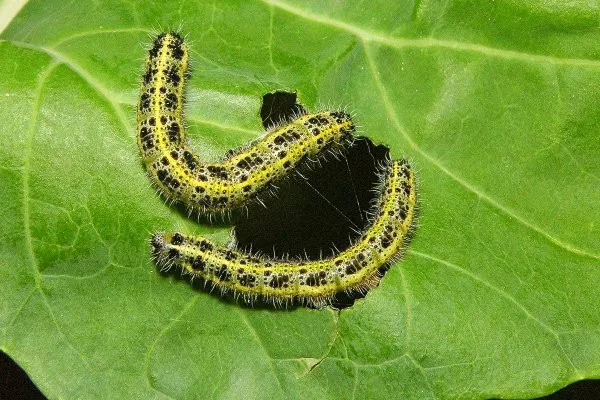Caterpillars can consume copious amounts of plant materials in a short time. Caterpillars use their antennae to scan their surroundings in order to eat safely in a hostile environment. Researchers of Wageningen University & Research discovered that this tiny 'caterpillar nose' is surprisingly advanced. This insight can serve to help protect crops without the use of harmful pesticides.
"The 'nose' of the Large White caterpillar (Pieris rassicae) has only 34 neurons, while the same insect has about 300,000 neurons when it reaches the stage of adulthood as a butterfly," says entomologist Alexander Haverkamp. "Nonetheless, the organ's functioning and the way information is processed in the brain is equally complex to that of an adult butterfly."

The surface of neurons involved in the sense of smell is covered with special proteins known as olfactory receptor proteins. These molecules bind to chemical substances in their environment. The receptors then trigger an electrical impulse that is sent to the antennal lobe, which is the area in the brain that calculates the identity of odors. The antennal lobe is made up of tiny compartments (glomeruli) that connect to other brain cells that help to recognize a complex scent, such as a flower or leave. The new study found that these processes are similar in both caterpillars and butterflies.
Enhanced survival opportunities
"This enables caterpillars to detect many different scents in their environment, enhancing their chances of survival, as caterpillars mature in a highly hostile environment surrounded by predators and poisonous plant substances," Haverkamp explains. "Because the Large White feeds on cabbage plants that are poisonous to insects, a well-developed olfactory organ is extra important for this butterfly species. The caterpillars, too, must be able to accurately identify particular scents."
The study adds to the knowledge of how caterpillars detect their environment and makes changing the insects' behavior possible. Thus, crops might be protected without the need for harmful pesticides to combat the caterpillars. The Large White caterpillars can destroy a cabbage harvest. In some parts of the world, the Large White caterpillars even threaten cabbage harvests in entire regions.
Behavioural change
The caterpillar's behavior can be influenced by growing caterpillar-repelling plants in between the cabbage crops. Combined with the availability of plants favoured by the caterpillars elsewhere, caterpillars can be lured away from the crop. A chemical-free crop protection strategy such as this requires a detailed understanding of what these insects can actually smell.
The study into the Large White caterpillar's olfactory organ is still underway. "We started with a study on the olfactory receptor genes' -which contain genetic information on the olfactory receptor molecules- ecological function. We hope this will provide us with more information on what chemical substances prompt a response from the receptor molecules and what message the caterpillar receives from them," Haverkamp says. "In time, this will hopefully enable us to better understand the caterpillars' sensory world."
Finally, the authors encourage everyone who sees a white butterfly or caterpillar this spring to just take a second and try to imagine the world from the insects perspective.
Source: wur.nl
